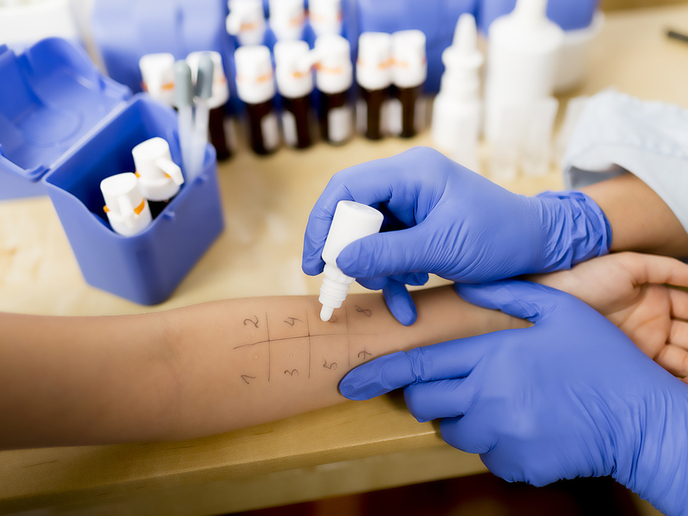Diagnosing food allergy at the point of care
In millions of people worldwide, the consumption of common foods such as fruits, eggs and nuts causes food allergies. A food allergy occurs when the immune system responds to a harmless substance as if it were a threat by producing immunoglobulin E(opens in new window) (IgE) antibodies on the surface of mast and basophil effector cells. Upon second contact with the food, the allergen is recognised by IgE, which triggers the release of chemicals, such as histamine, causing symptoms that include swelling of the lips and shortness of breath. Symptoms usually emerge between 30 minutes (early symptoms) to 24 hours (delayed reactions) after food consumption and vary in severity.
A novel diagnostic platform for food allergens
Considering that the prevalence of food allergies(opens in new window) is rising dramatically in both developed and developing countries, there is a need for fast and accurate diagnostic methods. To address this, the EU-funded AllerScreening(opens in new window) project developed a novel food allergen diagnostic device that measures soluble IgE in the blood of patients. The AllerScreening project brought together five clinical groups with extensive experience in food allergy and in the development of new diagnostic technologies. The goal was to translate an optical detection method into routine clinical testing. The AllerScreening point-of-care platform consists of an optical reader capable of detecting the binding of patient serum IgE to specific allergens present on the wells of the disposable biokit device component. One of the main advantages of the AllerScreening system compared to the existing allergy testing methods is its multiplexing capacity. “Unlike conventional skin prick tests, the AllerScreening test can detect antibodies against more than 20 different proteins from 12 different foods,” explains María Garrido Arandia, researcher that has been involved in the project. This makes it easier to diagnose patients with rare clinical history.
Advantages of the AllerScreening diagnostic device
Clinical validation of the AllerScreening assay unveiled a sensitivity of approximately 40 %, while the specificity reached nearly 90 %. These numbers were significantly improved for egg and peanut allergen diagnosis and are competitive with other solutions in the market. The possibility of varying the allergens used in the AllerScreening device offers the unique ability to customise the assay according to the clinician’s recommendation. The goal is to offer a panel of allergens that can be selected based on the patient’s history. AllerScreening can address the geographical differences in food allergy through assay customisation. This renders it suitable for implementation in various regions in Europe but also in the rest of the world. Moreover, its low cost and ease of use mean it can be adopted by healthcare systems even in developing countries. Importantly, using the device as a first-line strategy for the diagnosis of food allergies will have tangible benefits for the clinical management of this condition. Apart from healthcare cost savings, the quality of the results guarantees an improved life for patients offering substantiated evidence on the types of food they must avoid. “We envision AllerScreening will not only contribute to early detection of food allergies at primary care but also pave the way to further studies of immunological food intolerances,” emphasises Garrido Arandia. Such close monitoring of the evolution of food intolerance is expected to improve management on a personal basis.





